How To: Properly Plan And Pick Parts For An Air-Cooled PC, Part 1
What better way to wrap up a scorching summer than with a last word on cooling? We explain the most important rules for creating ideal airflow, address the potential effectiveness of side fans, and discuss the finer points of graphics card cooling.
Airflow: Ventilate Graphics Cards Well
Graphics Card Ventilation and Cooling
Before you hop online and buy the fastest graphics cards you can get your hands on, make sure you're picking the models (and motherboard) that facilitate proper airflow.
Your best bet is on a card able to exhaust the heat it dissipates straight out the back of your chassis, even if its blower-style cooler tends to generate more noise. Typically, the reference models designed by AMD and Nvidia are good examples, though the Radeon HD 6990, GeForce GTX 590, and lower-end GeForce cards are guilty of deviating from our direct-exhaust preference.
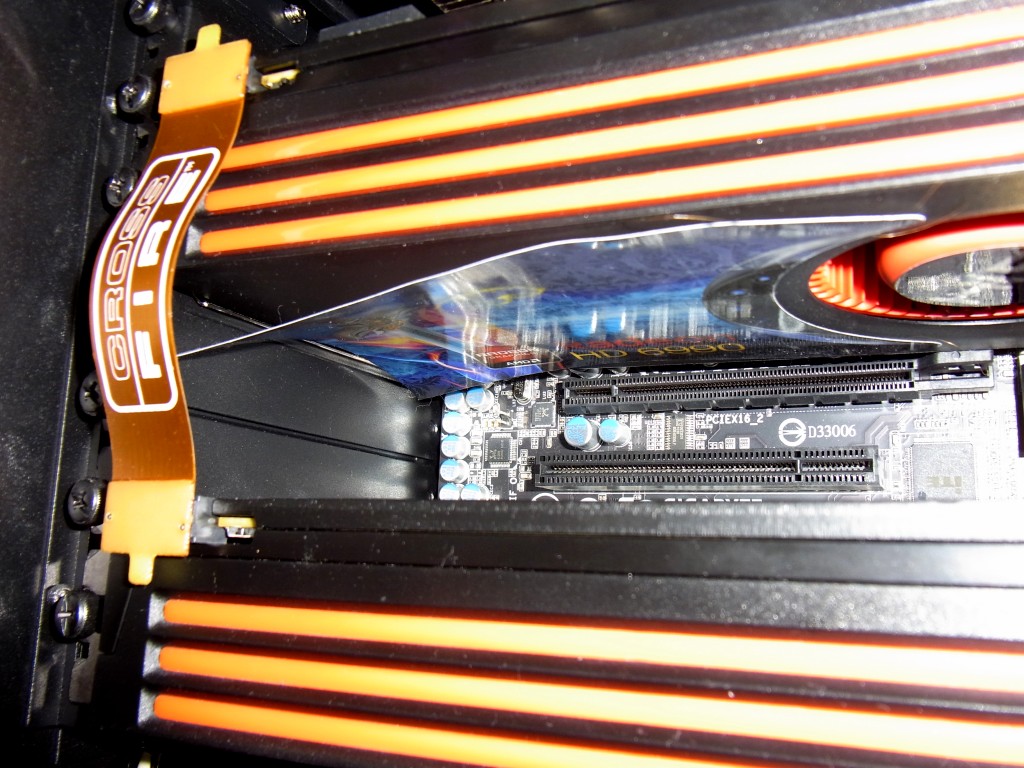
This is what happens when too much heat builds up. A mesh grill where those closed slot covers are seen might have prevented the card's label from getting so hot that it warped. Learn from this mistake, though. Eight hundred watts of heat dissipating in this chassis was bound to have adverse effects.
Schematic Illustrations


As long as the graphics card can get the heat out of the case, temperatures will stay at acceptable levels. Even a multi-GPU array has access to enough airflow to operate within safe tolerances, so long as there's room to breathe between the GPUs. If you want to exploit the value benefits of CrossFire or SLI, buy a motherboard with at least one expansion space between installed dual-slot cards (that's two vacant slots between the two end up using).
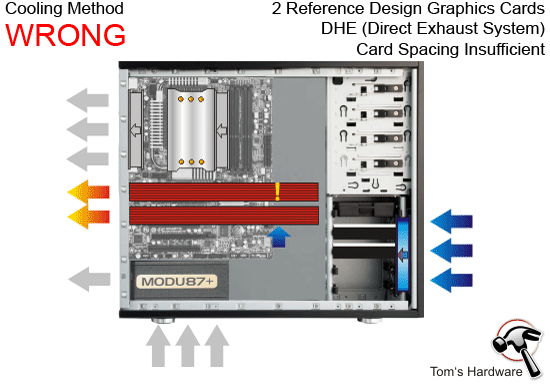
If the cards are too close together, as in the image above, it's easy for the board blocked off to overheat under even moderate duress. After all, its fan can't draw in enough air to keep the graphics processor cool.
Stay On the Cutting Edge: Get the Tom's Hardware Newsletter
Get Tom's Hardware's best news and in-depth reviews, straight to your inbox.
The situation is similar when it comes to dealing with graphics cards sporting axial fans. Though they're quiet, they end up blowing hot air around inside of your case, rather than out of it, leading to undesirable heat build-up.
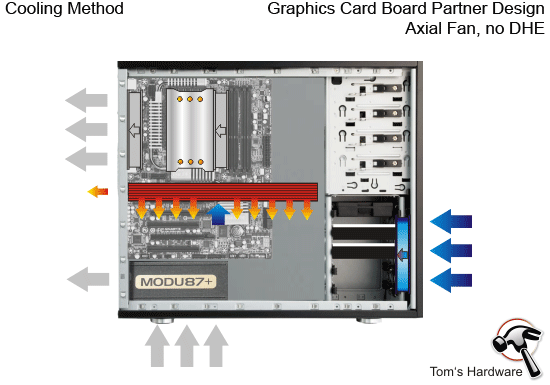
In many cases, a side fan can help. Even though they're continually criticized in our forum, a side fan's effectiveness (and the subsequent improvement to graphics card cooling) is both measureable and tangible:
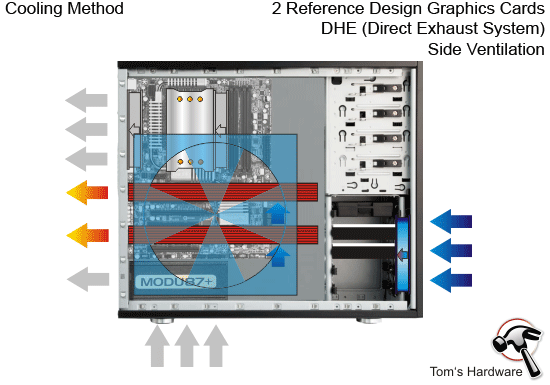
Optimization Options
There are interesting alternatives to simple slot covers if you find yourself in a thermal quandary. With the help of a slot cooler, heat build-up can be minimized somewhat, even after you've already constructed your system.
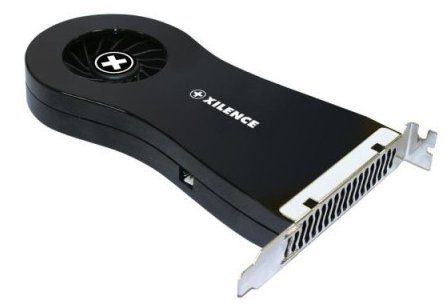
Current page: Airflow: Ventilate Graphics Cards Well
Prev Page Airflow: Measurements And Comparisons Next Page In Anticipation Of Part Two-
compton After reading the charts of PSU placement and the GPU cooling diagrams, I'm even more convinced that my Lian Li PCA05-NB is a great solution. The motherboard is upside down, so that GPUs (In my case an axial fan gpu) faces towards the top. The CPU is now at the bottom back of the case and with the rear fan acting as an intake and not exhaust, you get great CPU cooling. The PSU mounts in the bottome front as well. The great part of this design is all the heat ends up in the top. As an option, you can vent the top to release the heat rising from the GPUs, but I like the case because it has very little venting. Through unusual case design and careful component selection I have an almost silent system - but with overclocked CPU and GPUs. The front fan is the exhaust, but has a bezel over it. With a few bucks worth of acoustic dampening material I can even hear myself think sometimes. I regard low temps and low noise output to be two sides of the same coin, but I know that many seem to not mind loud systems and mainly just care about temps. It's never been easier to build a near-silent system, even with high performance gear.Reply
If you plan ahead of time, you can make a super quiet and cool running system. It's easier to build a cool and quiet system from the start than retroactively go back and try to make a noisy (and/or hot) system quiet with great temps.
I'll be waiting for article 2. -
Mark Heath Good timing as the Australian summer approaches. You guys in the US think you have it hot :SReply -
JOSHSKORN I want my next PC to be able to play Crysis AND make me hot dogs and Iced Frappuccinos.Reply
All kidding aside...curious though, the test setup is on AMD CPUs. What about Intel CPUs? I would assume many of the concepts are similar. -
frostmachine Great guide. I live in a perpetually hot n dusty place. This will come in handy.Reply
Would be better if there's some tips on dust management. -
beetlejuicegr heh i am just showing you a pic from my pc that the airflow is totally different because there is a watercooling system on the cpu, i hope that the picture is self explanatory for all.Reply
-
amirp Hey I have a question... for the PSU you say to not put it in upside down (ie. with it's opening facing up into the chassis..) but this is how I have mine in my ANTEC300 case since there is little room between bottom of case and the PSU if mounted right-side up. So what should I do?!!Reply -
BulkZerker amirpHey I have a question... for the PSU you say to not put it in upside down (ie. with it's opening facing up into the chassis..) but this is how I have mine in my ANTEC300 case since there is little room between bottom of case and the PSU if mounted right-side up. So what should I do?!!Reply
PSU's don't pull that much air, normally. So unless your Unit kicks it's fan speed way up there then don't royy abotu it and do as suggested. If it doesn't work then you can always just flip it back to where it was.